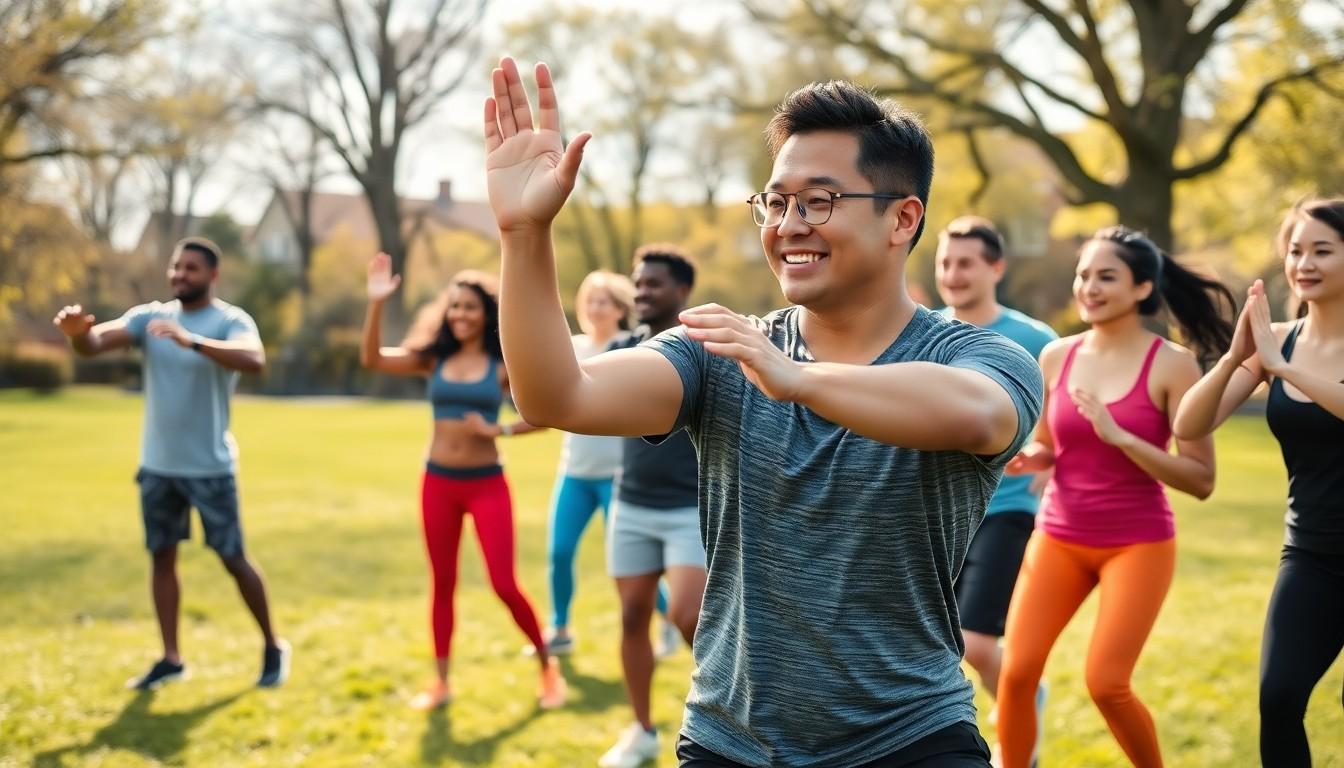In a world where stress seems to be the reigning champion, the concept of a wellness community is like a refreshing breeze on a sweltering summer day. Imagine a place where people gather not just to share their struggles but to uplift one another, swap smoothie recipes, and occasionally break into spontaneous yoga poses. If that sounds like your cup of herbal tea, you’re in for a treat.
Wellness communities offer more than just group hugs and motivational quotes. They provide a supportive network that encourages personal growth, healthy habits, and a sprinkle of laughter along the way. Whether it’s a local meetup or an online forum, these communities are where individuals transform their wellness journeys into shared adventures, proving that sometimes the best medicine is a little camaraderie mixed with a dash of humor.
Table of Contents
ToggleWhat Is a Wellness Community?
Wellness communities provide supportive environments where individuals engage in collective well-being. These spaces facilitate connections that enhance personal growth and foster healthy lifestyles.
Definition and Overview
A wellness community consists of individuals who share a commitment to physical, mental, and emotional health. Participants gather, either in-person or online, to exchange experiences and knowledge. Members often pursue common goals related to fitness, nutrition, mindfulness, and other aspects of wellness. Such associations encourage shared learning and offer resources that promote a holistic approach to health.
Importance of Wellness Communities
Wellness communities play a crucial role in enhancing individual well-being. They provide a sense of belonging that reinforces motivation and accountability. Members benefit from diverse perspectives, which often lead to improved health outcomes. Social interactions within these groups can decrease feelings of isolation and stress. By connecting with others, participants often find encouragement to adopt healthier habits and sustain their wellness journeys.
Types of Wellness Communities

Wellness communities manifest in diverse forms, each emphasizing unique aspects of health. These communities cater to various needs and preferences, fostering connection among members.
Physical Wellness Communities
Physical wellness communities encourage individuals to engage in activities that promote fitness and movement. Group workouts, hiking clubs, and team sports fall into this category. Participants share tips on exercise routines, nutrition, and goal-setting. Many find motivation through shared challenges and accountability with peers. Supportive environments help members stay committed to their fitness journeys, ultimately enhancing physical health.
Mental Wellness Communities
Mental wellness communities focus on promoting emotional and psychological health. They often provide workshops, support groups, and mindfulness practices. Members exchange coping strategies for stress, anxiety, and other mental health challenges. Sharing personal experiences can lead to profound insights and foster understanding. Such environments nurture resilience and connection, making mental wellness a collective endeavor.
Online Wellness Communities
Online wellness communities offer virtual spaces for individuals seeking health-related support and guidance. Through platforms such as social media, forums, and apps, people connect regardless of geographic barriers. Members access valuable resources, share advice, and discuss various wellness topics. Interaction occurs through chats, webinars, and video calls, allowing for a global exchange of ideas. Flexibility in participation accommodates different lifestyles, promoting accessibility in wellness practices.
Benefits of Joining a Wellness Community
Joining a wellness community offers numerous advantages that enhance individual health and well-being.
Support and Accountability
Support from peers creates an encouraging environment. Members motivate each other to stick to goals and commitments. Accountability within the community reinforces personal responsibility. Sharing challenges leads to collective problem solving and growth. Encouragement from others fosters resilience, making it easier to overcome obstacles. Positive reinforcement contributes to higher success rates in reaching wellness objectives. Individuals experience emotional support during tough times, which alleviates feelings of isolation. This shared sense of purpose strengthens bonds among members, reinforcing their commitment to wellness.
Access to Resources and Information
Access to resources enhances the wellness journey significantly. Members gain exposure to workshops, webinars, and expert consultations. Information shared within the community includes nutrition tips, exercise plans, and mental health strategies. Shared experiences provide practical insights that individuals can implement in their daily lives. Connecting with like-minded individuals facilitates the exchange of ideas, leading to innovative wellness practices. Members also discover local events and initiatives that promote health and well-being. Online communities offer a wealth of resources that might not be locally available, broadening participants’ horizons. Engaging with diverse knowledge enhances overall wellness understanding, making individuals better equipped to pursue their goals.
How to Find the Right Wellness Community
Finding the right wellness community involves understanding personal health aspirations and ensuring alignment with community values. Clear goals guide individuals toward communities that best support their wellness journeys.
Identifying Your Wellness Goals
First, define specific wellness objectives. Consider areas of interest such as physical fitness, mental health, or nutrition. Next, prioritize goals based on personal needs and aspirations. This clarity helps individuals seek communities dedicated to similar goals. An example includes joining a community focused on nutrition if dietary changes are a primary concern. Knowing these goals ensures participation in a group that encourages achievement.
Evaluating Community Fit
Evaluation begins with research. Look for communities that match identified goals, paying attention to their focus and activities. Consider group dynamics, membership size, and communication style. Engagement in a supportive environment promotes accountability. Explore reviews and testimonials to gauge the experiences of existing members. Additionally, participation in introductory sessions allows firsthand assessment of compatibility. Ensuring a good fit maximizes the benefits derived from group support, leading to enhanced well-being.
Wellness communities offer a powerful avenue for individuals seeking to enhance their well-being through connection and shared experiences. By fostering an environment of support and accountability, these communities empower members to pursue their health goals collectively. The diverse perspectives within these groups not only enrich personal journeys but also cultivate a sense of belonging that can significantly reduce feelings of isolation.
As individuals explore their options, finding the right community can be transformative. Whether through physical activities or mental health support, the right fit can make all the difference in sustaining motivation and achieving lasting wellness. Embracing the journey within a wellness community can lead to profound personal growth and a healthier lifestyle.



